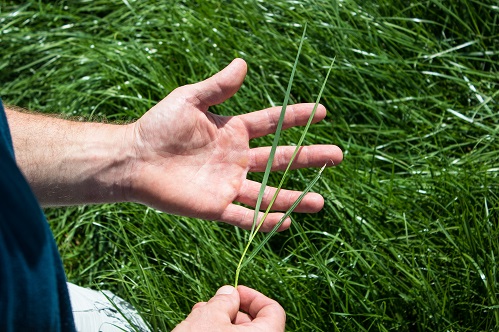Get going with grazing
Thursday, 3 March 2022
The 2022 grazing season is now upon us, so it is important to look back over the last grazing season and pinpoint what could be improved as we move forward.
Adopting best grassland management practices increases the vital link between grass growth, utilisation and profitability on farms. Moving from set stocking to paddock grazing can almost double grass yield from an average usable yield of 4.3 t DM/ha to 8.2 t DM/ha. Utilisation increases to around 80%, but is the hassle of moving fences worth it? If the cost of buying in an extra 3.9 t DM/ha of feed is compared with buying some fencing and troughs that will last five years or more, then the answer is yes.
Measuring grass growth is important, but equally vital is the use of the collected data.
This involves analysing the previous season’s grass growth and asking yourself what you did well and what you didn’t do so well. This can then be applied to the forthcoming grazing season.
Follow this checklist to guide you through a full grass analysis, celebrate the high points and come up with a plan to tackle the weak spots this grazing season:
- What did you achieve? Write down everything you can think of. Realising how much you did achieve helps you realise what you are capable of
- What have you learned from the last grazing season? What can you learn from the good bits and the mistakes? (But don't dwell on misfortunes – all successful people make mistakes.)
- What do you want to achieve this year?
- What are you doing that is stopping you? This makes you think about things you are doing that will prevent you from reaching your goals: is it views about yourself (I can't!) or assumptions about other people (they won’t), or a lack of skills?
- Break your goals down into stages and work out what you specifically need to do (and when) – and remember SMART: Specific, Measurable, Achievable, Realistic, Timed
- Make a plan – success is 80% planning and 20% doing
- Set goals that stretch but don’t strain you and your farm team
- Get stuck in!
It is important that you understand how grass grows if you are to get the most out of it, and it’s worth remembering the three-leaf theory when faced with any difficult decisions or grazing disasters this year. Understanding how the rye-grass plant grows, helps with important management issues, such as residual height and post-grazing recovery time.
- A rye-grass plant only ever grows three live leaves; when a fourth leaf appears, the first leaf dies off
- Leaf 1 produces 10–15% of the grass in a sward
- Leaf 2 produces 30–40% of the grass
- Leaf 3 produces 45–55% of the grass
- Best-quality grass is between 2.5 and 3 leaves
- Lengthening grazing to around 23–24 days grows an extra 0.5 of a leaf
- Graze at 8–10 cm, leave a residual of 4–5 cm – sugars are stored in this stubble and help to grow the next leaf after grazing
- Leave 4–5 cm between clumps and 10 cm on clumps to achieve a balance between residual
- Leaf appearance rate depends on temperature and moisture
More information can be found on the AHDB website, which ranges from manuals through to webinars

Topics:
Sectors:
Tags:

